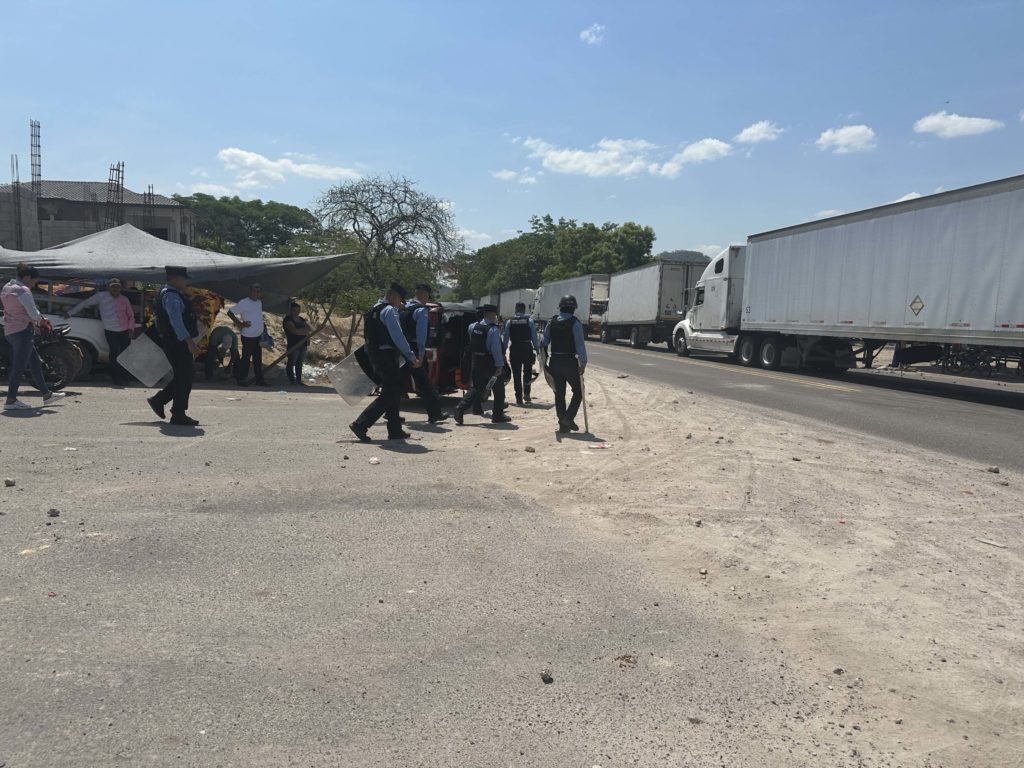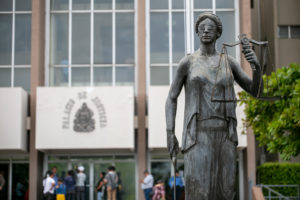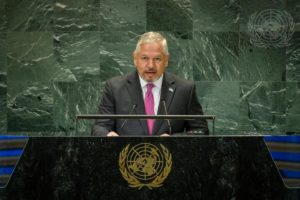On the evening of April 26, Honduras’ National Police cracked down on more than 1,500 protesters with gunfire and tear gas at the detour in Las Hormigas, El Triunfo, department of Choluteca. The cause of the conflict is common and structural in southern Honduras: the government has repeatedly granted concessions to companies, allowing them to manage and exploit public goods and services.
During the COVID-19 pandemic, Grupo W – a conglomerate of several companies engaged in industrial, commercial and residential projects – was granted a concession to build a terminal that would organize transportation. Quintín Soriano, mayor of Choluteca, and Jairo López, regional director at the Honduran Transportation Institute (IHTT), have instructed that the new terminal is a mandatory stop for regional transportation; a measure that will raise the fare that thousands of people in the region pay.
Text: Areli Palomo, Línea 84
Investigation: Areli Palomo and Claudia Fortín Savia, Radio 89.1
Saturday, April 27, 2024, before the intense heat of noon sets in.
A bullet case was found on the ground near the gas station at the detour of Las Hormigas, municipality of El Triunfo, near the border with Nicaragua, where communities have maintained a long tradition of social protest.
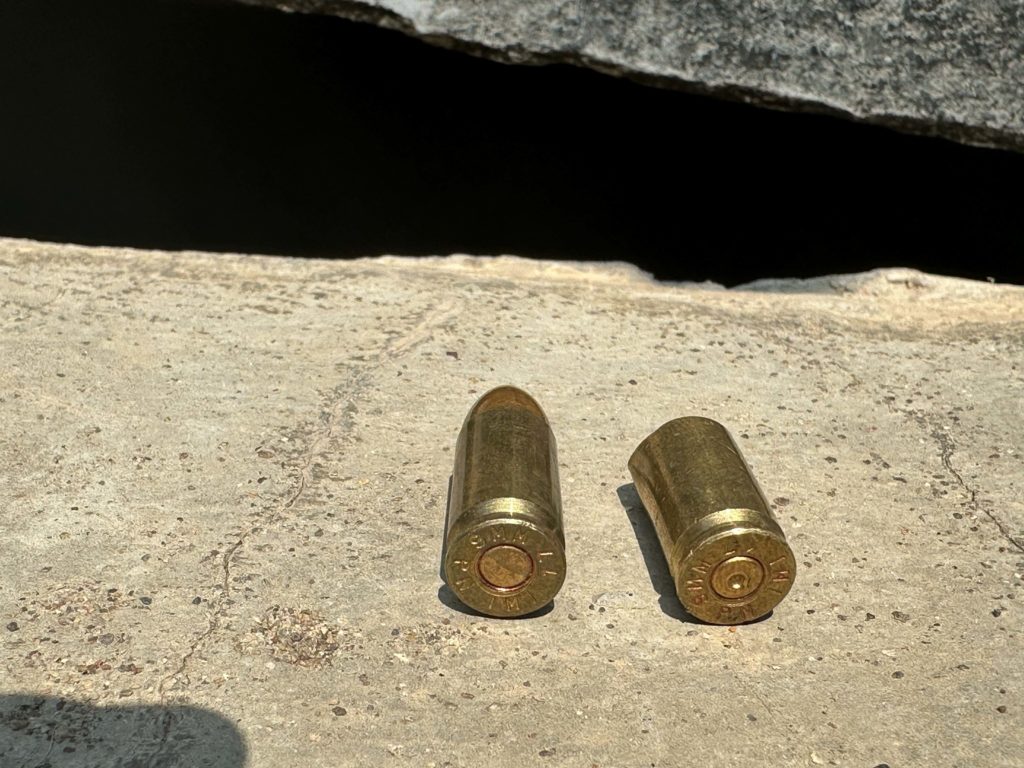
The southern heat, under the candescent sun, quickly leads to dehydration. Plastic bags and rocks are scattered on the ground, and there are many police officers. Here, on the evening of Friday, April 26, the National Police cracked down on 1,500 protesters, most of them young people, with gunfire, tear gas and tanks – according to Frente Triunfeño en Defensa por la Vida (FTDV).
Eight people suffered gunshot wounds. According to several protesters, the police looked for them inside their homes near the highway and destroyed motorcycles owned by employees of shrimp companies in the area. Employees usually park their vehicles in the detour of Las Hormigas, where the companies they work for pick them up, said Merciades Zepeda, treasurer of FTDV and secretary of Movimiento Ambientalista Social del Sur por la Vida (Massvida).

Since April 24, FTDV and other groups from communities in Triunfo and Namasigüe had peacefully blocked highway CA-3 (in three locations), which connects Choluteca to Guasaule on the border with Nicaragua.
Protesters blocked the highway to make three demands. Firstly, they demand the construction of the La Pacona bridge, which would connect several communities in El Triunfo. This demand was agreed upon by Christian Castillo – former mayor of the municipality of El Triunfo and a fugitive charged with aggravated drug trafficking – and congressional representatives on February 13, 2024. They supported this project and expressed their commitment to leaders of communities – La Pacona and Ojo de Agua (both in El Triunfo) and San Bernardo (in Namasigüe) – to carry it out.

Although there was no agreement in writing, community leaders took this commitment very seriously, and this is why they protested.

Secondly, communities demand the paving of the stretch of the highway between Ojo de Agua, municipality of El Triunfo, and San Bernardo, Namasigüe. This project and the construction of the bridge were agreed upon at the same time.
The third, and perhaps most important, demand is to stop rerouting intra-urban traffic from nearby communities and municipalities heading to the city of Choluteca through the Balcanes area, where a large, extravagant private terminal was built: Gran Terminal del Pacífico, also known as Granterpa or Terpa.
On October 24, 2020, during the COVID-19 pandemic, Quintín Soriano, current mayor of Choluteca, negotiated a concession to build and manage Granterpa with Flefil & Asociados S. de R. L. de C. V.
In order to grant the concession, Soriano has recourse to Decree No. 91-2017 – published in the official government newspaper, La Gaceta, on July 13, 2018 – under which the National Assembly grants municipalities the authority to sign contracts with companies to build “land transportation terminals, among other facilities, and carry out public works.” This authority is granted to municipalities so they can organize transportation, says Nidia Castillo from the Network of Lawyers in Defense of Human Rights (Red de Abogadas Defensoras de Derechos Humanos).
Castillo says the terminal could have been built with public funds or private investments. The mayor opted for the latter, granting the concession to Sociedad Flefil & Asociados, S. de R. L. de C. V., for 20 years. At some point, Grupo W – founded by the Williams family, one of the most powerful in southern Honduras – became the concessionaire.
Although Article 4 of the decree specifies that “the municipality and the private investor should inform the population of the projects,” they didn’t. It’s not clear why the mayor granted a concession involving a project of such importance to the public without informing them.
Municipal Law (Ley de Municipalidades), Article 25, Paragraph 9, stipulates that the population should be informed of these projects by means of an open meeting of the council (cabildo abierto). That law states that communities should be aware of any projects concerning economic development.
The terminal’s extravagance is an affront to a population living on $6.85 per capita per day. They are being forced by the mayor and the concessionaire to take a route around the city of Choluteca, which they cannot enter directly anymore, and pay a higher fee at Granterpa.
On June 26, 2023, Mayor Soriano passed an ordinance prohibiting inter-urban and rural transportation from accessing the city center. This further aroused indignation among the population, who had already been protesting against impositions from the mayor and actions from Jairo López, regional director of IHTT, who was allegedly dismissed. However, he stated on April 29 that he was still acting as regional director.
Mayor Soriano and López sought ways of rerouting transportation to Granterpa. This is the case of Rafael Medina, owner of transportation company Mi Yelvita, who was ordered by the National Police to take the route to the terminal in 2023.

Demands by transport workers to Honduras’ Supreme Court and protests from 2023 have been widely documented by the local press. In an attempt to stop social discontent, an agreement was signed on April 17, 2024, by transport workers, the mayor, a delegation of IHTT members, a delegation of CONADEH members, small business owners in the city’s market, the Council of Transport in the South (Consejo de Transportes del Sur – Cotsur) and the Prevention Department Unit (Unidad Departamental de Prevención – Udep-06) at CONADEH’s regional office.
They agreed that transport from rural areas is allowed in the city of Choluteca as long as drivers return to Granterpa and pay a fee, a periodic payment in exchange for using the facilities. This fee will eventually result in a higher cost of transportation for the public.
Businessman David Ignacio Williams, president of Grupo W, was present as an observer. The company announced on social media and through statements by its representatives the successful construction of Granterpa, emphasizing the access to commercial products, the outstanding security and excellent services the terminal will provide.
The lack of interest shown by the municipal government and one-sided agreements such as the one from April 17 – which concealed, minimized and did not address the problems caused by not complying with the law, that is, not informing the population of the project – triggered social unrest.
On April 25, FTDV, with the support of Massvida, summoned their base to block the highway in the detour in Las Hormigas. This was the most important protest, exceeding 3,000 people during the day, says Merciades Zepeda, who, along with leaders of the movement, was present.
People from other areas affected by this problem also went to the streets to block the highway. Important locations spontaneously blocked by protesters were El Empalme, El Triunfo and San Bernardo in Namasigüe. The latter is just ahead of Las Hormigas. “It was mostly young people blocking the highway,” Zepeda said.
In the morning of April 26, Elba Reyes, lawyer and regional delegate of CONADEH in Choluteca, arrived in San Bernardo. She was accompanied by Jorge Alberto Rodríguez Montoya, regional chief of the National Police in the Choluteca and Valle departments, and Walter Rafael Varela, head of police in Choluteca.
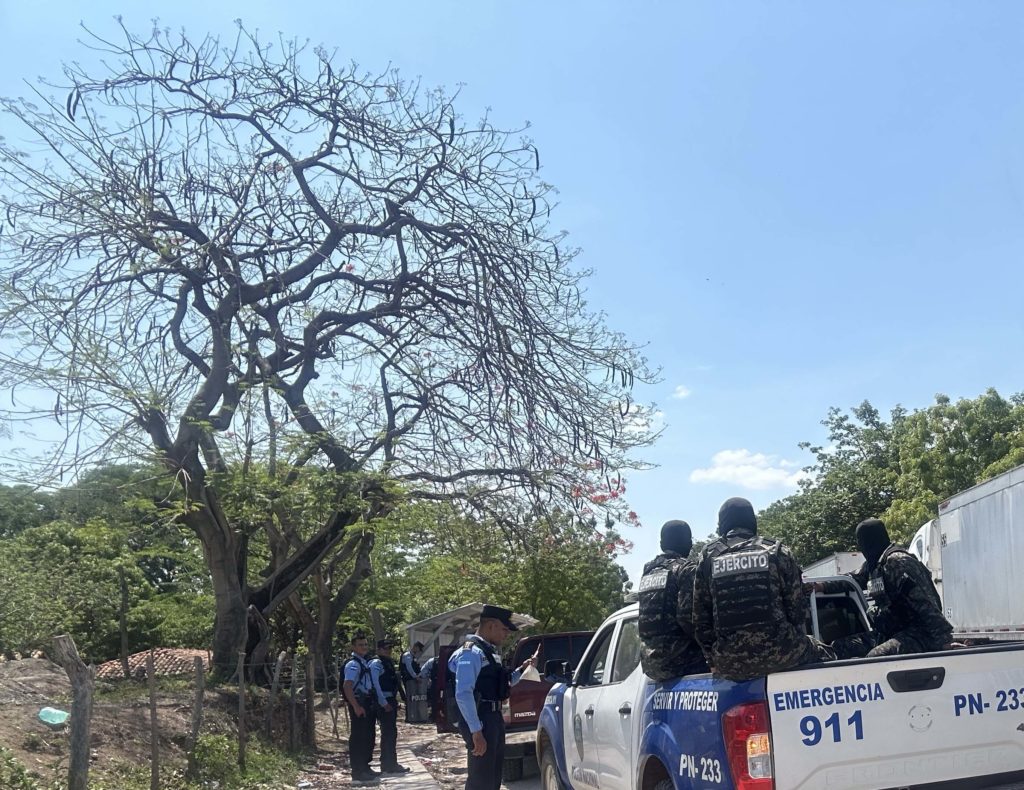
Before the repression
With a steady voice, a young person, who was present at the protests in San Bernardo, tells me that people started gathering at that location in the afternoon on Thursday, April 25. “Transport workers were the first who took to the streets,” the person said. A group of around 200 people slowly gathered. Transport workers left before nightfall, and the rest stayed.
According to sources who were present and asked to remain anonymous, at about 11 a.m. on Friday, April 26, Reyes and two police patrols arrived in San Bernardo to inform protesters that she “brings information from the commissioner of transport.”
She said she wanted to reach the detour in Las Hormigas and tell protesters that five of them could go to Tegucigalpa, Honduras’ capital, to meet with the commissioner, and a bus would take them.
Protesters had initially demanded a dialogue with authorities in El Triunfo which is why they were mistrustful and did not allow them through. It was a tense situation, and protesters had been under the scorching sun for over a day; “it seemed suspicious that they wanted to bus our comrades out of here,” they told me.
Eventually, Reyes left after an altercation with protesters for trying to film one of them accusing Jairo López of causing the whole situation.
She returned at about 2 p.m. with a police officer, who yelled: “I’m the law!” demanding that protesters clear the highway. But they were angered by his arrogance and refused to comply.
Protesters in Las Hormigas were heading to the demonstration in San Bernardo, and CONADEH personnel had to wait, but they left after one hour, and then the repression took place.
Mediators
The lawyer said she left the detour in San Bernardo because of the tense atmosphere; she was yelled at and insulted, and returned at the behest of leaders “Danilo” and “Tomasa,” with whom she spoke on the phone as she and the commissioners were heading back to Choluteca.
The leaders told her they would see to it that she’s allowed past San Bernardo. However, after waiting for two hours, she and the commissioners left. Reyes says they begged and implored the protesters to be allowed through.
Reyes says she didn’t know the leaders nor the organizations that called for the protests, even though such actions had been previously announced by Frente Triunfeño and Massvida, and had been diffused by local media outlets. Moreover, Tomasa Peralta, who talked to Reyes on the phone on April 26, is the coordinator of Movimiento Massvida and member of Frente Triunfeño.
In an interview, Peralta said that leaders of Frente Triunfeño and Massvida and managers of auto-rickshaw companies from the area met with El Triunfo’s Deputy Inspector Samir Moncada on April 25. In the meeting, they brought forward protesters’ demands and made known the names of the persons designated to engage in dialogue with authorities. It was expected that Moncada would forward that information to commissioners in Choluteca.
Despite this, Reyes says she first heard of the protests on Saturday, April 27, after FTDV and Massvida held a press conference. She received news from social media, not from organizations’ websites, and “they never noticed the connection between organizations and protests.” Furthermore, she maintains that leaders of those organizations never contacted her, and “no one told her about them,” even though information about the organizations and their leaders was widely disseminated.
According to Reyes, protests got out of control, and there was a lack of coordination among organizations, hampering any attempts at mediation and dialogue with authorities.
She told authorities in Tegucigalpa that she couldn’t reach the detour to meet with the leaders, and the message was given so that it had a “multiplying effect.” She says she brought attention to the presence of vulnerable groups in the protests and doesn’t know who issued the order to clear them, but it had to come from the government’s high-ranking officials.
The great repression
At about 4 p.m. people in El Chorizo, a community of San Bernardo, issued a warning that the police were on their way with tanks. Protesters in El Chorizo falled back to San Bernardo, where people had grabbed rocks and sticks to defend themselves.
The clash between the police and protesters in San Bernardo took place at about 4 p.m. The police arrived with guns, helmets, riot shields, tear gas and a tank that sprayed water to disperse protesters. Those affected by the repression and wounded by gunfire said there was something in the water that caused irritation. Many young protesters have been called vandals, but they say they were acting in solidarity with communities.
Protesters endured violence for several hours before being teargassed at about 8 p.m. Canisters fell on the streets and houses, forcing people to flee to the fields. Others were wounded by gunfire. The clash lasted until about 11 p.m. A police contingent remained in San Bernardo, and three police buses reached the detour in Las Hormigas, where around 1,500 people – of the 3,000 present in the morning – blocked the highway, according to FTDV. The repression there was also brutal.
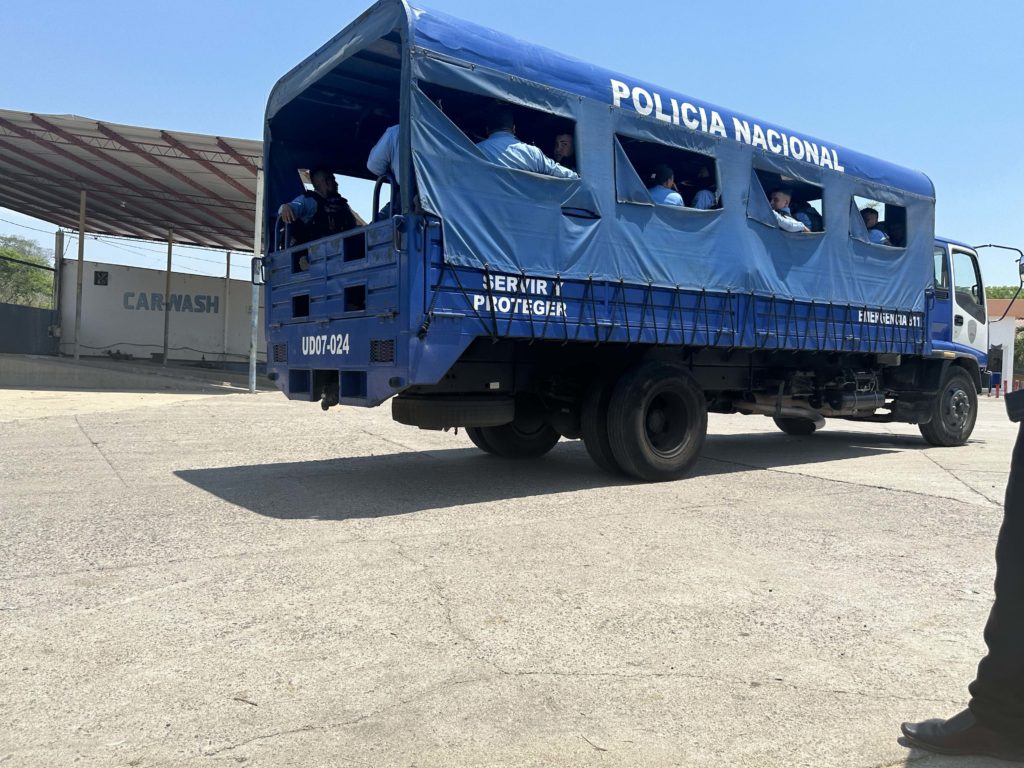
“We saw the motorcycles’ headlights as they were speeding toward us! Young people from Yoloran and San Bernardo had gathered here. The police came here using tear gas and shooting at protesters – who, feeling cornered, grabbed clods, rocks or anything they could find to throw at the police,” Merciades Zepeda tells me. Officers started hitting and shooting at people, who ran and tried to resist. Tear gas canisters fell on houses, into several of which the police burst.
Efforts by the police to clear protesters, who defended themselves with sticks and rocks, concluded at dawn. The clash resulted in eight people wounded by gunfire and unmeasurable damage to the property of families who live close to the highway and of workers who had parked their motorcycles on the streets.
Repression is not liberation
Despite several statements and evidence of the repression, Rodríguez Montoya, said there was “no response” from protesters in San Bernardo, and they were met with aggression which is why tanks were deployed.
From Tegucigalpa, orders were given to the police “to clear the protest.” Under this motto of “liberation,” he asserts that neither tear gas nor firearms were used, only helmets and riot shields because “the use of firearms has been prohibited to avoid dangerous situations for the population and police officers.” However, what took place was in fact repression against more than 1,500 protesters in Namasigüe and El Triunfo.
On Tuesday, April 30, Human Rights Deputy Secretary Héctor Longino Becerra, joined by two people, arrived in El Triunfo to engage in dialogue with the FTDV committee and coordinators of Massvida, gather information on the repression and forward complaints from protesters to authorities in Tegucigalpa.

I drove past Las Hormigas, where I had found the bullet case near the gas station. Had it hit the gas dispensers, everyone would’ve been blown to pieces, including the hope of the young men and women who went to the streets in defense of social justice.
Author’s note: This article is dedicated to the young men and women who resisted police repression and continue fighting for social justice. Don’t ever give up.

